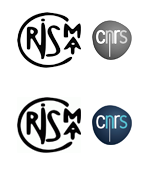 Přednášky projektu Know4NanoZveme Vás na přednášky zaměřené na mezinárodní projekty Horizon (příprava, podání, financování)
Přednášky projektu Know4NanoZveme Vás na přednášky zaměřené na mezinárodní projekty Horizon (příprava, podání, financování) JS 2026 získala Filipa Oliveira z ústavu 101Uspěla se svým projektem "Pioneering Tubular MXenes for Supercapacitor Energy Storage". Gratulujeme!
JS 2026 získala Filipa Oliveira z ústavu 101Uspěla se svým projektem "Pioneering Tubular MXenes for Supercapacitor Energy Storage". Gratulujeme! Workshopy projektu Know4Nano
Workshopy projektu Know4NanoVážení kolegové a přátelé,
srdečně vás zveme na workshopy projektu Know4Nano, které se budou konat 25. – 29. listopadu 2024 v institutu BioSense (Srbsko). Této pětidenní akce se zúčastní 40 lektorů z prestižních institucí z celého světa, kteří pokrývají rozmanitou škálu témat, včetně nanomateriálů, mikrobiologie, biosenzorů, bezpečnosti potravin a tzv. soft-skills dovedností nezbytných pro výzkumné pracovníky.
Pokud se nemůžete zúčastnit osobně, nabízíme připojení k workshopům přes Zoom na tomto odkazu.
Jménem organizačního výboru
prof. Zdeněk Sofer
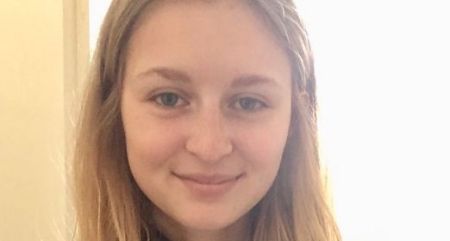 Cenu Crytur 2021 ovládla absolventka VŠCHT PrahaVítězkou se stala Anna-Marie Lauermannová, ocenění získal i školitel Ondřej Jankovský.
Cenu Crytur 2021 ovládla absolventka VŠCHT PrahaVítězkou se stala Anna-Marie Lauermannová, ocenění získal i školitel Ondřej Jankovský.Diplomová práce Ing. Jana Havlíčka "Příprava oxidové keramiky metodou SPS" získala čestné uznání v Ceně Crytur - soutěž o nejlepší diplomovou práci v materiálových vědách. Tato práce byla také oceněna Silikátovou společností České republiky jako nejlepší diplomová práce.
Gratulujeme!
Dr. Cajzl uspěl se svým projektem "Studium elektro-optických vlastností heterostruktur typu perovskit-diamant dopovaných ionty vzácných zemin" a získal podporu pro mladé vědecké pracovníky udělované v rámci soutěže JIGA. Celkově bylo uděleno 11 grantů, z toho 4 na FCHT. Gratulujeme a přejeme úspěchy v práci na projektu!
Wet deposition of inorganic metal oxides thin films for in solar cells, smart windows and other semiconducting applications
Učebna / Lecture room: A02
Začíná v / Starts at: 10:00
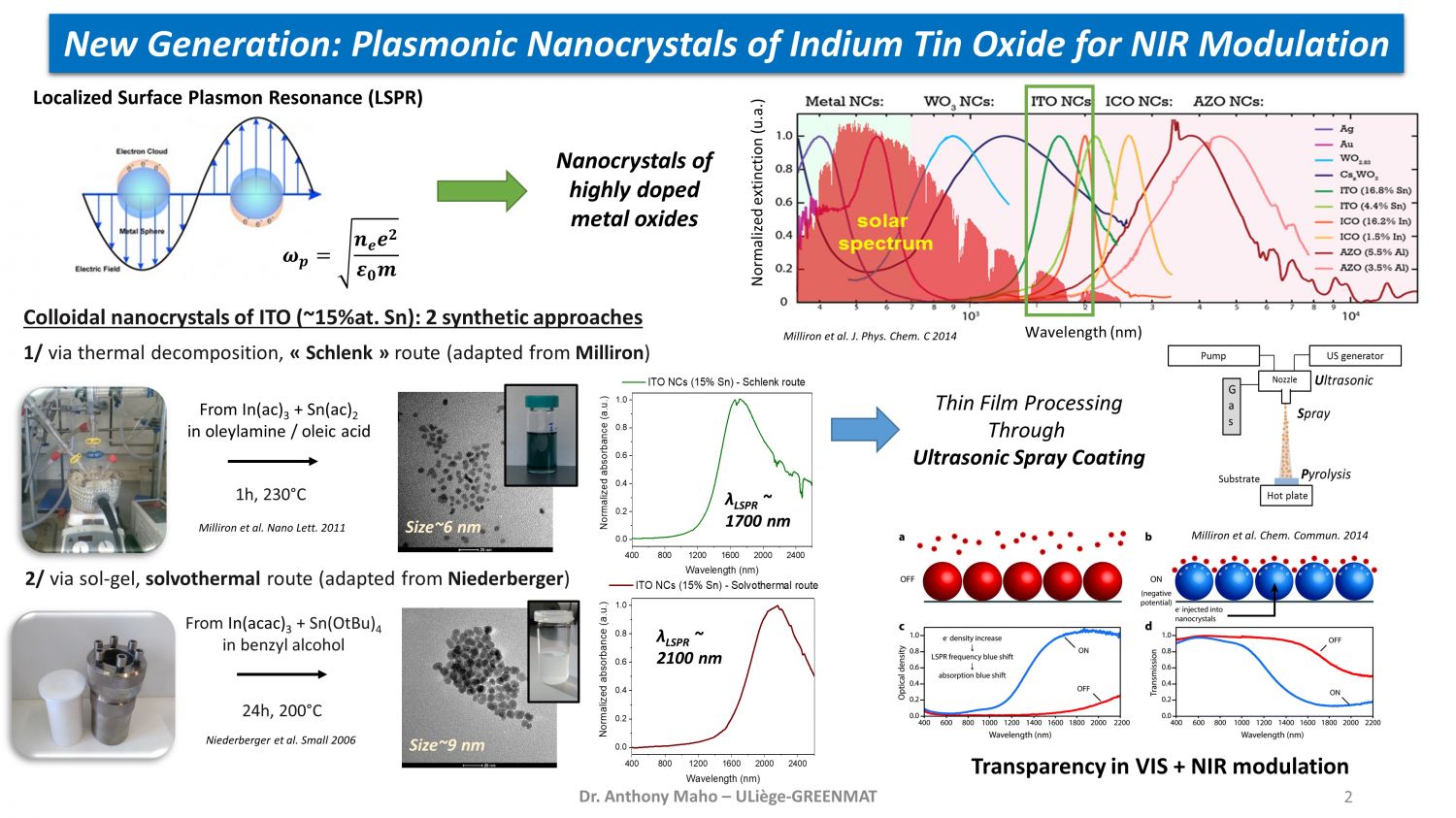
Abstract: Recent works of the GREENMAT group at University of Liège (Belgium) focus on the preparation of thin films of various (doped) metal oxides and related compounds to be integrated in optical-related devices such as smart windows or solar cells, with the global aim of improving energy efficiency in buildings. Wet coating approaches have been specifically considered, including dip-, spin- and spray-coating.
Particularly, ultrasonic spray deposition is acknowledged for both fundamental and industrial researches and applications. It leads to the formation of uniform thin layers on large area substrates at atmospheric pressure, with high control of the resulting morphology and thickness by adjustment of the practical spray conditions (substrate temperature, nozzle-to-substrate distance, deposition pattern, solution flow rate, carrier gas nature and pressure).
A specific attention is paid to the composition of the sprayed solution/suspension (precursor type and concentration, solvent) as well as the substrate nature and characteristics (morphology, crystallinity, conductivity) as it has a significant influence on film deposition mechanisms and properties. Incorporation of selected surfactants is also acknowledged for influencing wettability, nucleation and growth processes, and resulting functionality. Consecutive characterizations focus on crystallinity, microstructure and porosity, electronic and ionic conductivity, electrochemical behaviour, cycling response etc.
 Čt / Thu 26. 9. 2019 Invitation for Talk
Čt / Thu 26. 9. 2019 Invitation for Talk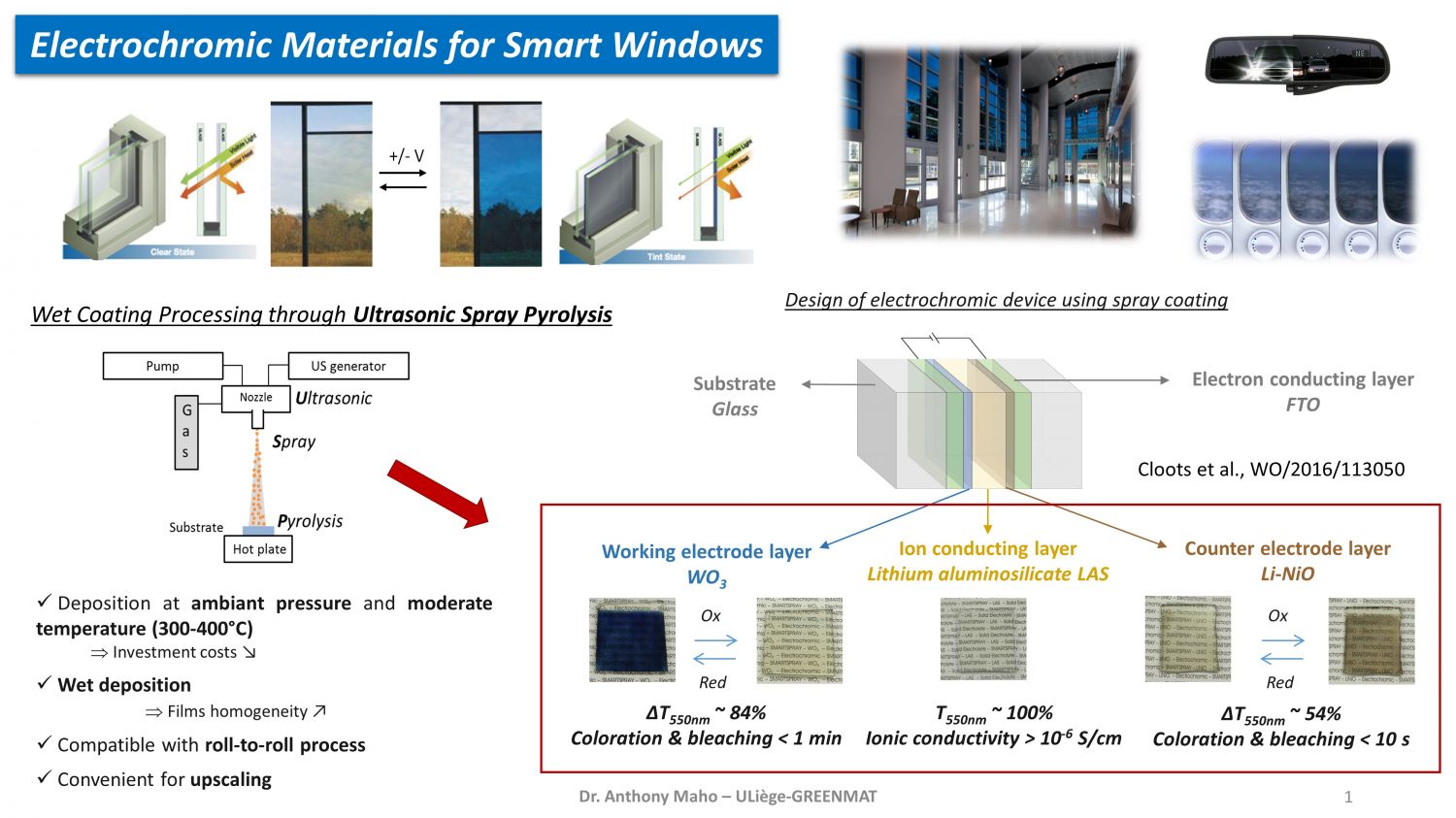
Učebna / Lecture room: A12
Začíná v / Starts at: 10:00
Abstract: Electrochromism in transition metal oxides (WO3, NiO, V2O5) has been studied since decades. This phenomenon is based on the reversible modulation of the optical characteristics of a material when an external voltage is applied, associated with redox processes based on electrons and ions transfers. Numerous growing applied devices are based on this technology: rear-view mirrors, displays, eyewear and so-called “smart windows” exploited for energy-efficient fenestration in glass buildings.
Recent advances in the field target the design of more energy-saving and functional materials. Therefore, plasmonic nanocrystals of highly doped metal oxides such as tin-doped indium oxide (ITO) are acknowledged for their ability to regulate the heat supply related to near-infrared radiations independently of their optical behavior in the visible (light input). This ability is based on a localized surface plasmon resonance (LSPR) mechanism which is related to their size, shape and doping ratio/distribution.
Extensively studied for almost 10 years, plasmonic nanocrystals are classically obtained from surfactant-assisted colloidal synthesis processes exploiting molecular precursors in liquid phase at moderate temperature (150–400°C) and under inert atmosphere. Hydro- and solvothermal protocols can also lead to the controllable synthesis of such compounds under mild conditions (< 200°C), exploiting the pressure produced in the sealed autoclave to generate highly crystalline species.
The presentation will describe how the parameters and mechanisms of the synthetic processes can be correlated with the resulting characteristics of the nanocrystals in terms of nature, structure and surface properties (ligand chemistry), their dispersion ability and stability in various aqueous and organic media, as well as their consequent optical and electrochemical properties when processed as thin functional films onto conductive glass substrates by wet methods, notably spin-coating and spray deposition.
In this presentation, my different research activities will be described. Thus, PhD topic, as well as three different postdoctoral positions, will be addressed before discussing in greater detail my current research activities.
When: Wednesday 21th November 2018. 14:00 h
Where: UCT Prague, Dept. Inroganic Chemistry, Technicka 5, Building A, 2nd floor, room no. 211.
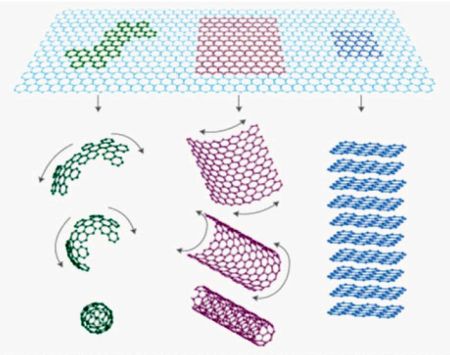 Laboratorní úlohy zaměřené na uhlíkové nanomateriály
Laboratorní úlohy zaměřené na uhlíkové nanomateriályV rámci projektu "Laboratorní úlohy zaměřené na uhlíkové nanomateriály" financovaného z Fondu rozvoje vysokých škol byly vytvořeny tři nové úlohy pro oborové laboratoře použití moderních charakterizačních technik.







